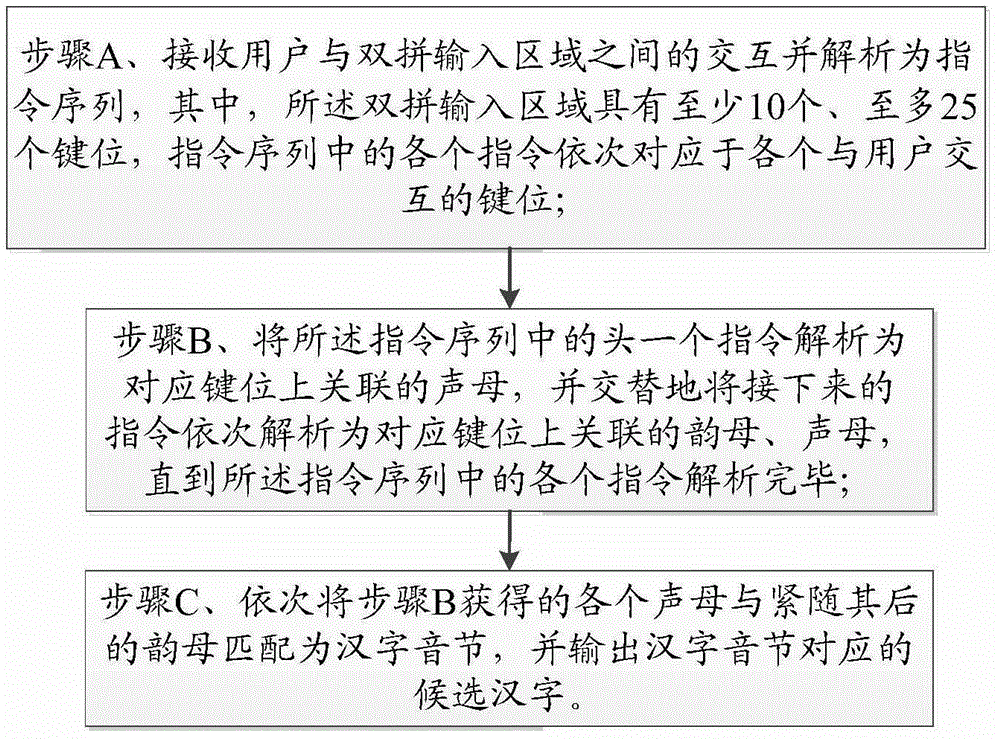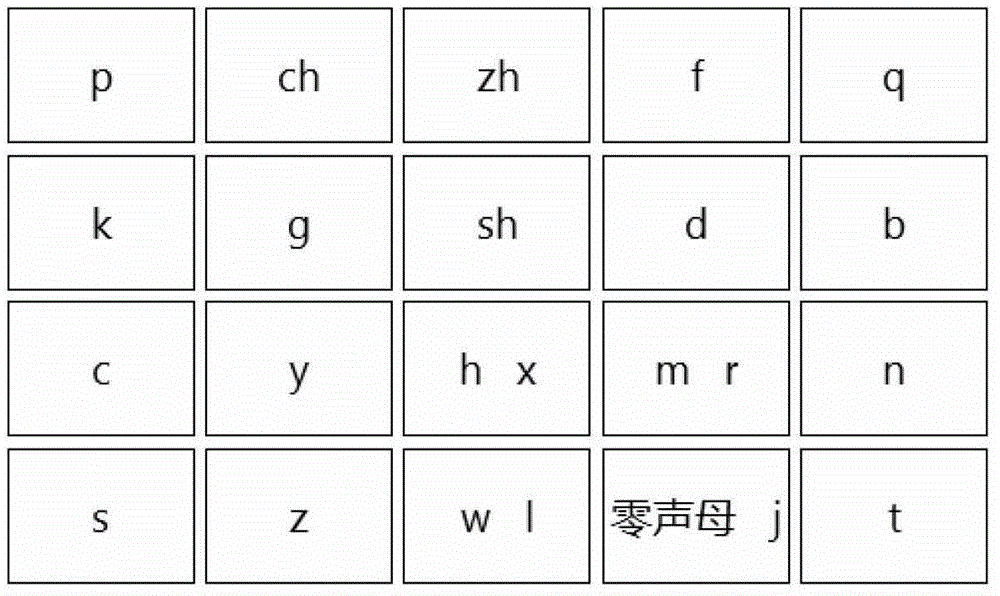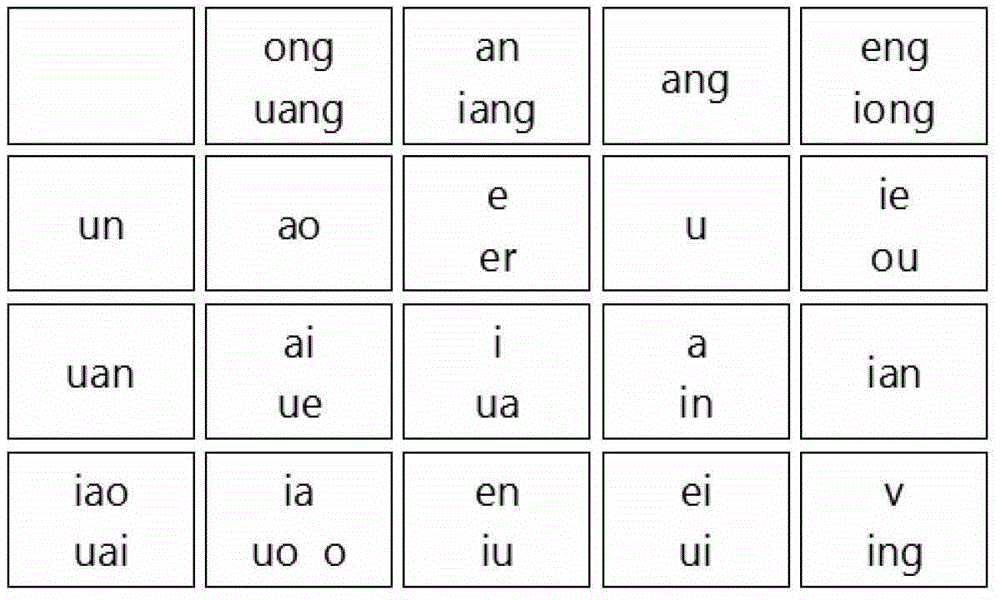Inputting method of Chinese character pinyin
An input method and Chinese pinyin technology, applied in the input/output process of data processing, electrical digital data processing, instruments, etc., can solve the problems of not conforming to Chinese input characteristics, inconsistent layout, and large number of keys, and achieve improvement. Input experience, improve input efficiency, and experience good results
- Summary
- Abstract
- Description
- Claims
- Application Information
AI Technical Summary
Problems solved by technology
Method used
Image
Examples
Embodiment 1
[0068] Such as Figure 1 to Figure 4 shown.
[0069] A method for inputting pinyin of Chinese characters, which uses the Shuangpin input method to output Chinese characters, including:
[0070] Step A, receiving the interaction between the user and the Shuangpin input area and analyzing it into an instruction sequence, wherein the Shuangpin input area has at least 10 and at most 25 key positions, and each instruction in the instruction sequence corresponds to each and Keys for user interaction;
[0071] Step B, analyzing the first instruction in the instruction sequence as the associated initial consonant on the corresponding key position, and alternately analyzing the next instruction into the corresponding final and initial consonant on the corresponding key position, until in the instruction sequence The instructions of each command are parsed;
[0072] Step C, sequentially matching each initial consonant obtained in step B with the following final consonant into a Chine...
Embodiment 2
[0131] Such as Figure 5 to Figure 7 The difference between this embodiment and Embodiment 1 is that the keys in the Shuangpin input area are arranged in a rectangular array of 4 rows and 4 columns, with a total of 16 keys. For the specific relationship between initial consonants and keys, please refer to Figure 5 ; The relationship between finals and keys, see Figure 6 ;The layout of the specified adjustment syllables in the Shuangpin input area, see Figure 7 . Other technical features are the same as those in Embodiment 1, and will not be repeated here.
Embodiment 3
[0133] Such as Figure 8 to Figure 10 The difference between this embodiment and Embodiment 1 is that the keys in the Shuangpin input area are arranged in a rectangular array of 4 rows and 6 columns, with a total of 24 keys. For the specific relationship between initial consonants and keys, please refer to Figure 8 ; The relationship between finals and keys, see Figure 9 ;The layout of the specified adjustment syllables in the Shuangpin input area, see Figure 10 . Other technical features are the same as those in Embodiment 1, and will not be repeated here.
PUM
 Login to View More
Login to View More Abstract
Description
Claims
Application Information
 Login to View More
Login to View More - R&D Engineer
- R&D Manager
- IP Professional
- Industry Leading Data Capabilities
- Powerful AI technology
- Patent DNA Extraction
Browse by: Latest US Patents, China's latest patents, Technical Efficacy Thesaurus, Application Domain, Technology Topic, Popular Technical Reports.
© 2024 PatSnap. All rights reserved.Legal|Privacy policy|Modern Slavery Act Transparency Statement|Sitemap|About US| Contact US: help@patsnap.com










